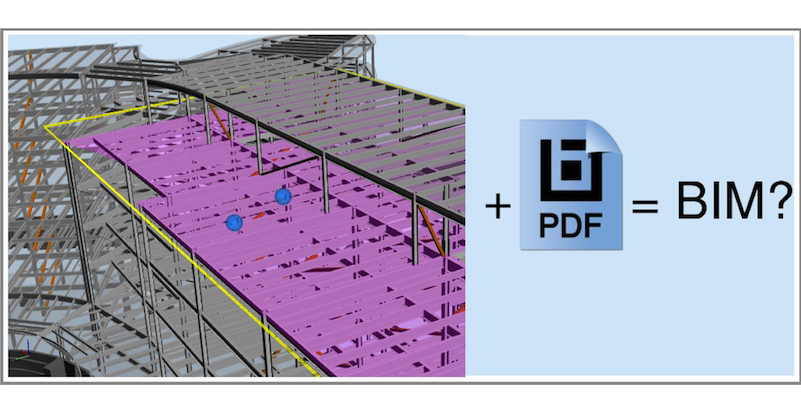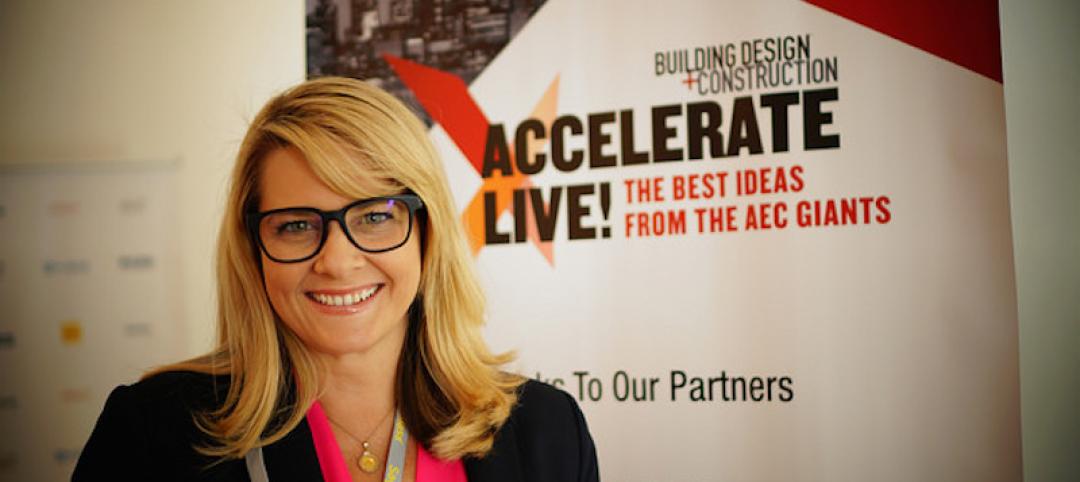There’s a debate brewing in conversations surrounding BIM. It typically comes up when the discussion turns to ways to share model information with other project partners, especially trade partners or inter-disciplinary project partners. For most designers and virtual design and construction or VDC teams, navigating, collaborating and sharing model-centric data isn’t that big of a challenge.
But for those project partners outside of these circles, a breakdown tends to occur. One way to solve this breakdown is by leveraging PDF—specifically, 3D PDFs. With 3D PDFs, you’re able to share parts and components of the model without needing special software, or complicated workflows. You can pull apart buildings, cut through floors, and view simulated animation for assembly instructions—all within a PDF. You can even comment and markup these PDFs, asking clarifying questions or providing additional instructions.
However, it is here where a debate begins. The question is asked, “If discussions are occurring outside of the model, is it still BIM?” My response is typically, “Well, what is the alternative?” Or more importantly, “What is the intention of BIM in the first place?” Isn’t the goal of BIM to tie together information created, distributed and gathered during the project lifecycle? Aren’t we all striving to remove process inefficiencies, changing the way project teams create, share and consume information?
This is usually where the debate goes one of two ways – it either sparks a lively conversation about the real-life challenges facing the AEC industry and the solutions beginning to bridge the BIM gap, or it turns into a lecture on the lack of progress due to industry laggards, who are stubborn in their ways. Either way, a conversation is taking place, which I believe is relevant to the industry today and necessary for those outside of the BIM conversation to even take notice and care.
Admittedly, I tend to argue pretty fiercely for the trade partner in this debate. In full disclosure, I spent the first five years of my career in the AEC industry, working for a small but reputable Herman Miller contract furniture dealer. Some would consider these humble beginnings, but I would argue it was the perfect place to start my career. I consider it now the boot camp experience of AEC. I gained valuable firsthand experience with the trade partner’s perspective, and the very real challenges they face. During this time, I was taken under the wing of an industry veteran who taught me some valuable lessons that I still hold to this day. Lessons like the golden rule of CYA and to always have a good roll of blue tape in your car, as well as a tape measure. Another valuable lesson she taught me: always communicate clearly. When creating installation drawings, always put yourself in the shoes of the person you’re creating drawings for. Markup your drawings to answer their questions so they don’t have to ask – it saves you both valuable time.
This fundamental lesson seems to gets lost in our haste to push the industry forward. If the goal is to communicate clearly, leveraging rich data represented by a 3D model, wouldn’t we be reaching this goal if we were able to get all trade partners on board, even if it’s using a 3D PDF? Is it not progress to bridge the gap between the BIM haves and have-nots? And those who argue that PDF is nothing but digital paper may need to rethink that statement with the recent advancements in 3D PDF technology.
So now I ask you, what do you think of this debate? On which side do you fall? Is there something missing from 3D PDF as it exists today that is holding back the flow of information? Please share your thoughts…it’s a great conversation I hope we can continue to have.
More from Author
Sasha Reed | Dec 15, 2017
Future vs. current state of construction innovation: How will we make the leap?
Looking beyond today’s constraints to the possibility of what “could be” is a key characteristic of those defining and delivering innovation to design and building firms across the globe.
Sasha Reed | Sep 19, 2017
BIM vs VDC…how the US and the UK differ in approaching digital project delivery
In this four-part series, Bluebeam VP Sasha Reed sat down with industry experts to examine the need for defining and understanding digital workflows and data management throughout the design and construction project lifecycle.
Sasha Reed | Jul 19, 2017
Introducing StrXur by Bluebeam
Our goal is to present unique perspectives you may not be able to find anywhere else.
Sasha Reed | Jul 13, 2017
Defining the future by mastering the art of change
From my perspective, what separates organizations thriving in the digital revolution from those who are not boils down to one thing: leadership.
Sasha Reed | Mar 15, 2017
Incentivizing change: Show me the money
Who is succeeding, and on what terms? And what will it take for everyone to experience the benefits of that success?
Sasha Reed | Oct 4, 2016
The talent shortage: Will the training the AEC industry desperately needs arrive in time?
As the construction industry bounces back from the Great Recession, an entirely new class of tech-savvy construction professionals has been created, and the supply of these highly skilled, tech-proficient pros has been quickly exhausted.
Sasha Reed | Jul 11, 2016
Construction Disruption at AECX: Technology, hackathons and the promise of change in LA
The lead up to AECX featured a discussion providing insight into the current state of the AEC technological revolution by exploring opportunities, challenges and choices AEC pros face.
Sasha Reed | Jun 23, 2016
Implementing Change: The Five Biggest Mistakes to Avoid
Two truths from the jobsite: 1) The best part about uncovering a problem is discovering its solution, and 2) The worst part about discovering the solution is implementing it.
Sasha Reed | Jun 9, 2016
With all these sharks in the water… (No Predictions Here...Part 2)
Rather than fighting to control the proliferation of apps, perhaps we should be training our eyes to look for signs of long-term viability among all the fins in the water
















